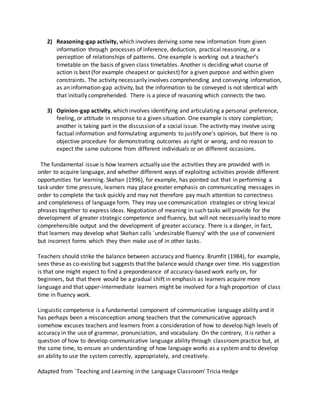Communicative activities aim to develop students' communicative language ability through natural language use that mirrors real-life interactions. These activities focus on meaning over form, involve students producing and negotiating ideas, have an information or opinion gap that makes responses unpredictable, and minimize teacher error correction. Prabhu identifies three types of communicative activities: information-gap activities which involve transferring information between students, reasoning-gap activities which require inferring new information, and opinion-gap activities involving personal responses. While fluency-focused activities may lead to quicker task completion and less attention to accuracy, a balance of both accuracy and fluency is important over time.


